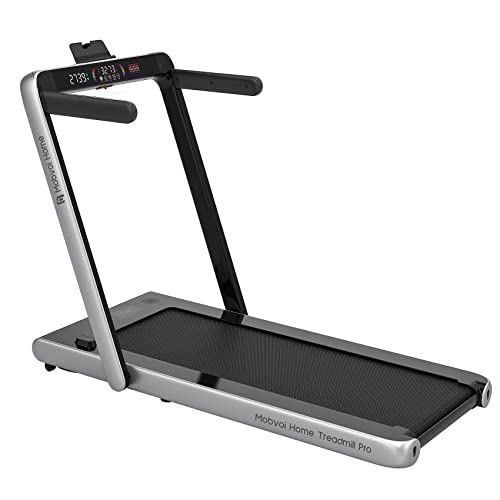10 Facts About Motorised Treadmill That Will Instantly Make You Feel Good Mood
The Rise of Non-Motorised Treadmills: A Comprehensive Guide
In the last few years, the fitness market has actually seen a surge of interest in non-motorised treadmills, also referred to as self-propelled or manual treadmills. These innovative pieces of devices have acquired appeal due, in part, to their special design and the numerous health advantages they provide. In this post, we will explore the advantages of non-motorised treadmills, their functions, and how they compare to conventional motorised treadmills. We will likewise offer answers to frequently asked concerns to help you choose if a non-motorised treadmill is the ideal option for you.
What is a Non-Motorised Treadmill?
A non-motorised treadmill is a type of exercise machine that depends on the user's physical effort rather than a motor to power the belt. Unlike conventional treadmills that utilize an electric motor to move the belt forward, non-motorised treadmills require the user to walk or run by physically pushing the belt with their feet. This style permits a more natural running or walking motion and has several benefits over its motorised counterparts.
Advantages of Non-Motorised Treadmills
Advantages
Non-Motorised Treadmills
Motorised Treadmills
Calories Burned
Higher due to self-propulsion
Continuous based on speed
Cost
Normally less expensive to acquire and maintain
More expensive and may need repair work
Injury Risk
Lower, due to adjustable intensity and natural kind
Possible for greater effect injuries
Mobility
Often lighter and much easier to move
Bulkier and typically much heavier
Quiet Operation
Operates calmly as there is no motor
Can be loud due to mechanical components
Adjustability
User-controlled speed and incline
Repaired speeds and incline settings
Key Features of Non-Motorised Treadmills
- Self-Propelled Design: Users set their pace, enabling a personalized exercise that can adapt to various fitness levels.
- Adjustable Incline: Most non-motorised treadmills feature an adjustable incline, offering users with choices to increase exercise strength.
- Light-weight and Portable: Many non-motorised designs are developed to be lighter and more portable than motorized variations, enabling users to quickly store and transfer them.
- Toughness: With fewer moving parts than motorised treadmills, non-motorised alternatives typically need less maintenance and are more resilient over time.
- Compact Size: Non-motorised treadmills generally have a smaller footprint, making them ideal for home fitness centers with limited area.
Comparing Non-Motorised and Motorised Treadmills
When selecting between a non-motorised and a motorised treadmill, it's important to comprehend the strengths and weaknesses of each type. The following sections will highlight a few of the key comparisons.
Cost-Effectiveness
- Non-Motorised Treadmills: Typically, they come at a lower price point, with fewer parts that might break or need maintenance. Home Treadmills -efficiency makes them available to a broader audience.
- Motorised Treadmills: While usually more versatile, they typically include a higher initial financial investment as well as possible continuous costs connected to repairs and electricity.
Exercise Intensity
- Non-Motorised Treadmills: Because users control the pace and strength, they can attain a more extreme exercise by changing their speed and inclines at any moment.
- Motorised Treadmills: These featured pre-set programs and settings that may restrict the irregularity and intensity based upon user experience.
Space Considerations
- Non-Motorised Treadmills: Their compact size and lightweight nature make them perfect for little areas, allowing for simple storage when not in use.
- Motorised Treadmills: These require a devoted location and normally use up more operational area, making them less suitable for small homes or homes.
Frequently Asked Questions (FAQ)
1. Are non-motorised treadmills ideal for newbies?
Yes, non-motorised treadmills appropriate for newbies because they permit users to manage their pace and strength, making workouts more manageable. Individuals can begin at a slower speed and slowly increase their effort as their physical fitness levels improve.
2. Can I operate on a non-motorised treadmill?
Definitely! Non-motorised treadmills are designed to accommodate both walking and running. Numerous users find that they can perform at different speeds, making it an outstanding alternative for runners who want to exercise indoors.
3. Do non-motorised treadmills require electricity?
No, one of the main advantages of non-motorised treadmills is that they do not require electricity, making them a more sustainable option for exercising.
4. How do I keep a non-motorised treadmill?
Upkeep for a non-motorised treadmill is very little compared to motorised variations. Regularly inspect the belt for wear and tear, and guarantee it is clean and devoid of debris. Following the manufacturer's guidelines will help lengthen its life expectancy.
5. Are there any limitations to non-motorised treadmills?
While non-motorised treadmills provide numerous benefits, they might not have some features that advanced motorised choices supply, such as predetermined exercise programs, heart rate monitors, and advanced incline settings. Nevertheless, for many fitness lovers, the self-propelled nature and benefits surpass these considerations.
Non-motorised treadmills have ended up being an increasingly popular option for those seeking a cost-effective, portable, and effective methods of improving their fitness. Their unique style enables adjustable workouts customized to private requirements, making them proper for almost anybody, regardless of fitness level. Elements such as space, spending plan, and desired workout strength should guide your decision. With their series of benefits, non-motorised treadmills are an excellent addition to any fitness regimen.
Whether you are a skilled professional athlete, a casual walker, or simply starting your fitness journey, think about providing non-motorised treadmills a shot; their flexibility and price might surprise you!
